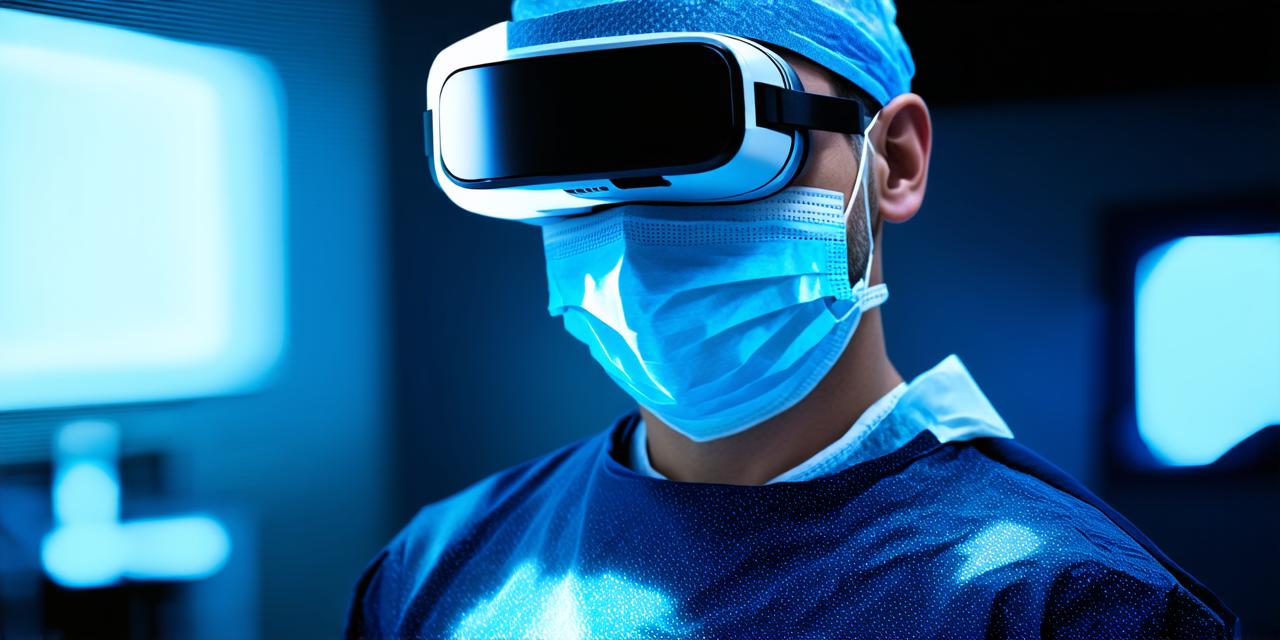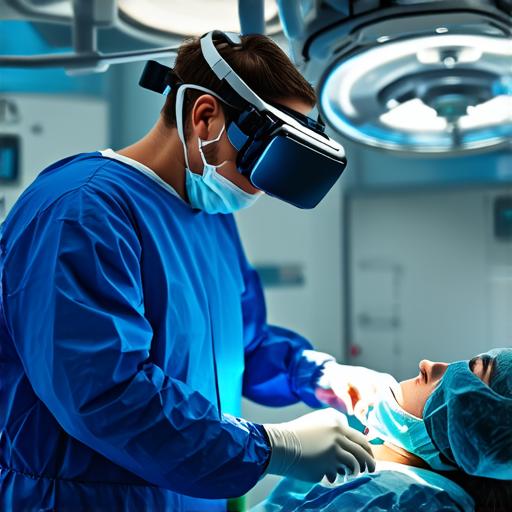
What is surgery conducted within a virtual reality setting?
Virtual reality technology is transforming the way we experience and interact with the world around us. In recent years, VR has also found its way into the medical field, where it is being used to revolutionize surgical procedures.
What is Virtual Reality Surgery?

Virtual reality surgery involves the use of VR headsets and specialized equipment to simulate surgical procedures in a virtual environment. The surgeon is able to see and interact with a 3D model of the patient’s anatomy, which allows them to practice their skills without risking harm to the patient.
One of the most significant benefits of VR surgery is that it allows surgeons to practice complex procedures in a safe environment. Traditional surgical training often involves practicing on cadavers or animal subjects, which can be both expensive and ethically questionable. With VR, surgeons can simulate these procedures on a virtual model, allowing them to gain valuable experience without putting anyone at risk.
Virtual reality surgery also allows for greater precision and accuracy in surgical procedures. By being able to see the patient’s anatomy in 3D, surgeons can more easily identify key structures and plan their approach. This increased accuracy can lead to faster recovery times and fewer complications for patients.
Limitations of Virtual Reality Surgery
While VR surgery offers many benefits, it is not without its limitations. One major limitation is the cost of the equipment and software required to perform these procedures. VR headsets and specialized surgical tools can be expensive, making it difficult for some hospitals and clinics to invest in this technology.
Another limitation of VR surgery is that it may not be suitable for all patients. Patients with certain medical conditions or those who are unable to tolerate the VR experience may not be able to benefit from this technology. Additionally, the use of VR in surgery may require additional training and certification for surgeons, which can add to the overall cost of the procedure.
Case Studies and Personal Experiences
One example of the successful use of VR in surgery is the work being done at the University of California, San Francisco (UCSF). UCSF has developed a VR surgical simulator that allows surgeons to practice complex procedures on a virtual model before performing them on real patients. This technology has been shown to improve the speed and accuracy of surgeries, as well as reduce the risk of complications for patients.
Another example of the use of VR in surgery is the work being done by the University of Cambridge in the UK. Researchers at this institution have developed a VR-based surgical simulator that allows surgeons to practice complex cardiac procedures on a virtual model before performing them on real patients. This technology has been shown to improve the accuracy and efficiency of these procedures, as well as reduce the risk of complications for patients.
Personal experiences with VR surgery vary widely depending on the individual. Some surgeons report feeling more comfortable and confident in their abilities when using VR technology, while others find it difficult to adapt to the virtual environment. However, overall, most surgeons who have used VR in surgical procedures report that it has been a valuable tool for improving their skills and reducing the risk of complications for patients.
Expert Opinions
Dr. Michael Guzik, a surgeon at UCSF, explains the benefits of VR surgery: “Virtual reality technology allows us to practice complex procedures in a safe environment, which can lead to better patient outcomes. By being able to see and interact with a 3D model of the patient’s anatomy, surgeons can gain valuable experience without risking harm to the patient. This increased precision and accuracy can also reduce the likelihood of complications and speed up recovery times.”
Dr. Sarah Williams, a cardiothoracic surgeon at Cambridge University, adds: “Virtual reality technology has the potential to revolutionize the way we approach complex surgical procedures. By allowing surgeons to practice on a virtual model before performing these procedures on real patients, we can reduce the risk of complications and improve patient outcomes. The ability to see the patient’s anatomy in 3D also allows us to plan our approach more effectively, leading to faster recovery times and better overall patient experiences.”
Summary
Virtual reality technology is transforming the way we experience and interact with the world around us. In recent years, VR has also found its way into the medical field, where it is being used to revolutionize surgical procedures.


